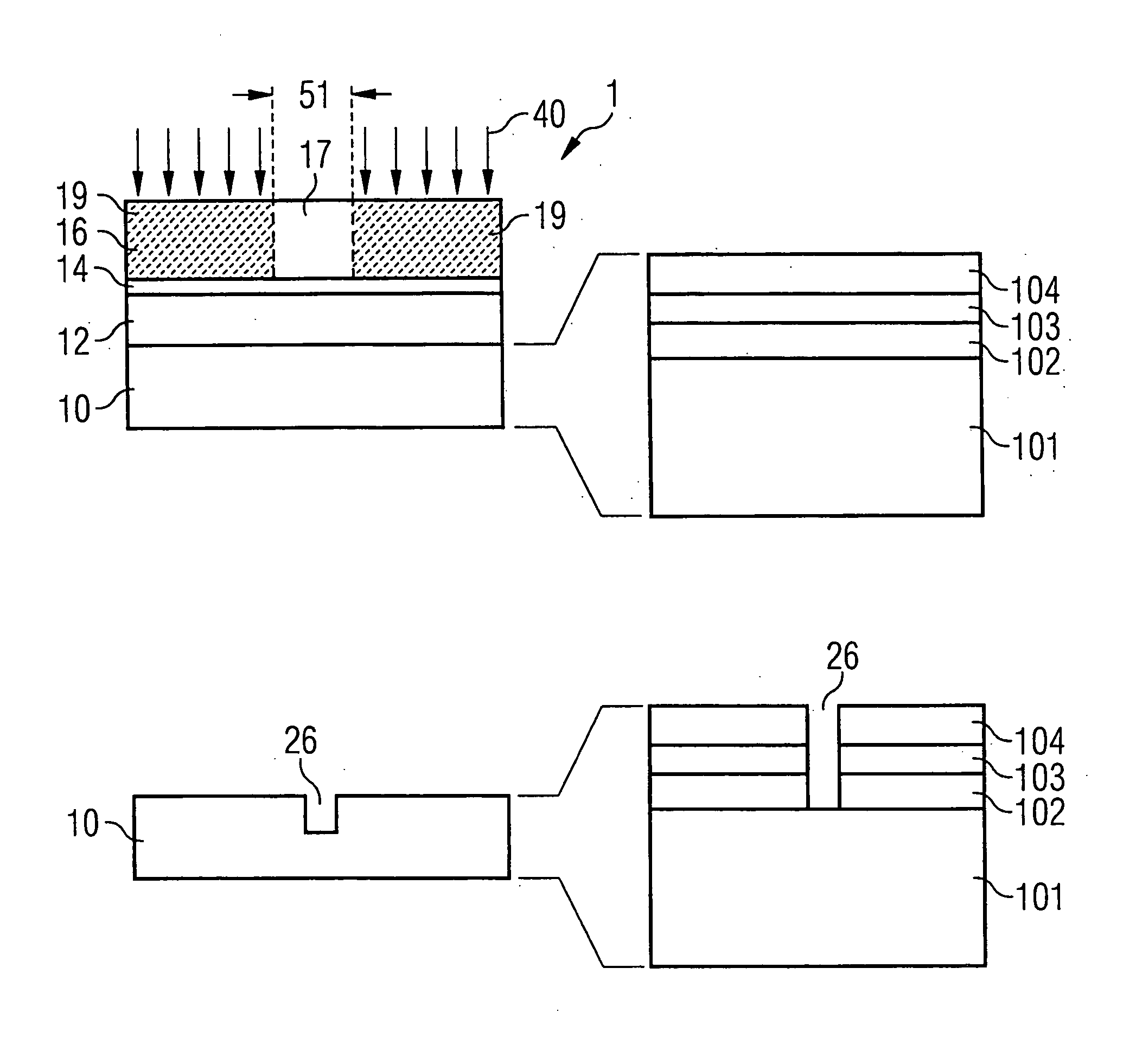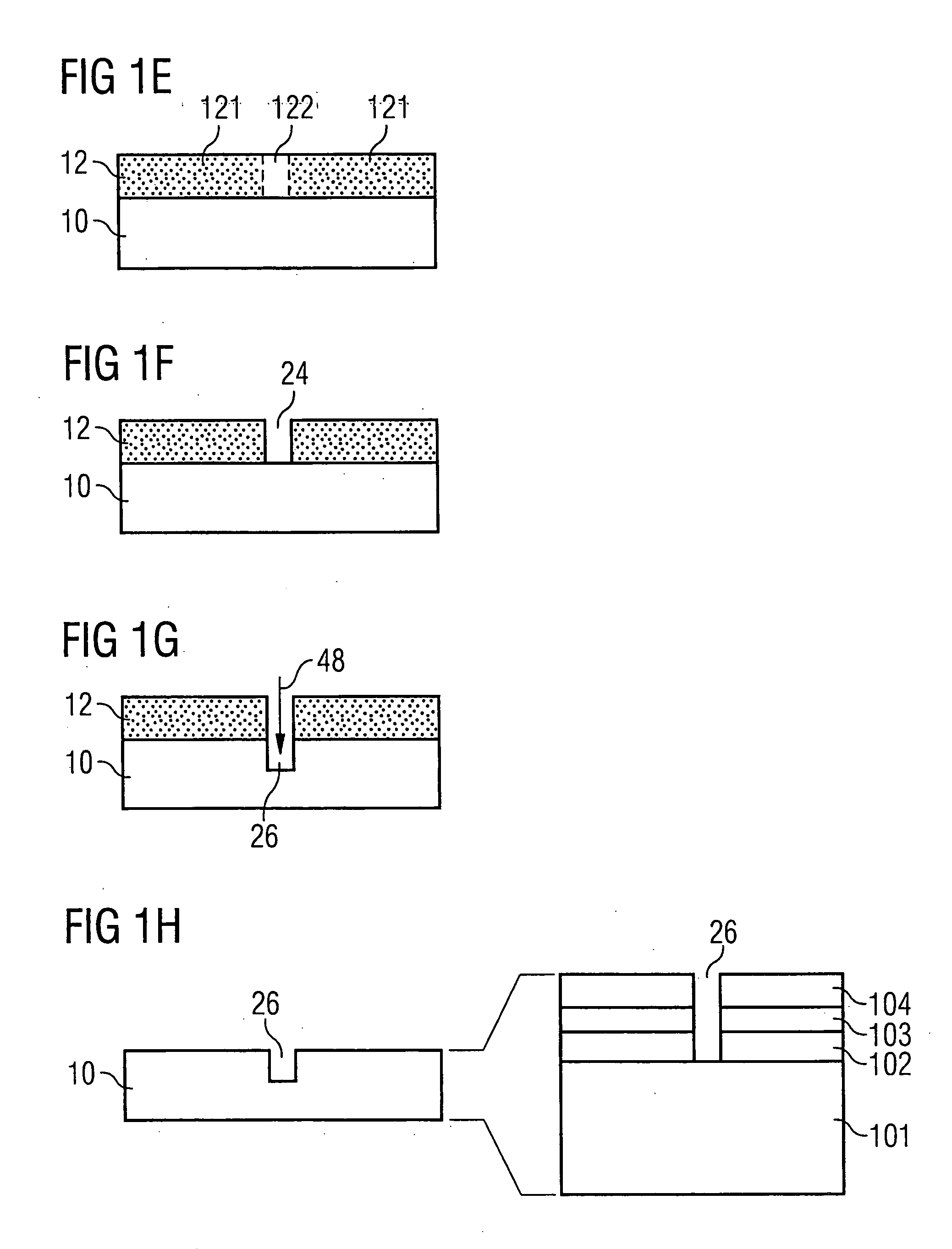Method for forming a trench in a layer or a layer stack on a semiconductor wafer
- Summary
- Abstract
- Description
- Claims
- Application Information
AI Technical Summary
Benefits of technology
Problems solved by technology
Method used
Image
Examples
Embodiment Construction
[0032]FIG. 1 shows a first exemplary embodiment of the method according to the invention in a sequence of process steps. FIG. 1a illustrates the state after the provision of a semiconductor wafer 1 when carrying out an exposure step 40. The semiconductor wafer 1 comprises a coated substrate 10, a hard mask layer 12, an antireflection layer 14 (ARC, antireflection coating) and also a photosensitive resist 16, which is a positive resist. In the case of a positive resist, exposed resist portions are stripped out in a developer step.
[0033] The enlargement on the right-hand side of FIG. 1a diagrammatically shows the construction of the coated substrate 10. Situated on the silicon substrate 101 is a layer stack, comprising a first oxide layer 102, a nitride layer 103 and a second oxide layer 104. The layers 102-104 form a layer stack, a so-called ONO layer. Such a layer stack may be used for example for the nonvolatile storage of electrical charges in NROM memories.
[0034] The hard mask ...
PUM
 Login to View More
Login to View More Abstract
Description
Claims
Application Information
 Login to View More
Login to View More - R&D
- Intellectual Property
- Life Sciences
- Materials
- Tech Scout
- Unparalleled Data Quality
- Higher Quality Content
- 60% Fewer Hallucinations
Browse by: Latest US Patents, China's latest patents, Technical Efficacy Thesaurus, Application Domain, Technology Topic, Popular Technical Reports.
© 2025 PatSnap. All rights reserved.Legal|Privacy policy|Modern Slavery Act Transparency Statement|Sitemap|About US| Contact US: help@patsnap.com



